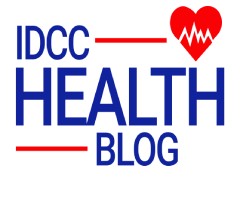Do Pain Management Doctors Prescribe Pain Meds?
You walk into a clinic expecting relief, but instead you leave with more questions than answers. When it comes to managing chronic pain, one doubt lingers in many patients’ minds: do pain management doctors prescribe pain meds? The answer isn’t as straightforward as it seems—and understanding it could completely change how you approach your treatment and recovery. Curious? Let’s break it down.
TL;DR
Pain management doctors may prescribe medications, but their approach is cautious and individualized. Opioids are used mainly for severe acute or chronic pain when other treatments fail, always under strict supervision. A wide range of pain medications exists, from OTC drugs to stronger options like Tramadol, each with specific benefits and risks. Alternative therapies such as acupuncture, massage, meditation, and herbal supplements complement medical treatments. Reviewing a patient’s medical history is essential to guide safe and personalized care. Prescription guidelines emphasize combining non-drug and drug strategies, setting realistic goals, close monitoring, patient education, and minimizing opioid risks.
Contact pain management doctors in Brooklyn New York now

How Often Do Pain Management Doctors Prescribe Opioids?
The use of opioids in pain treatment has long been viewed with caution, often due to lack of knowledge and fear of dependence. Still, when prescribed wisely and under proper supervision, they can be effective and safe.
Specialists prescribe opioids with varying frequency, depending on several factors:
- Severe acute pain: common after surgeries or serious injuries.
- Severe chronic pain: used when other treatments fail to provide relief.
- Patient condition: overall health and individual risks affect the decision.
Opioids remain a fundamental option in treating severe pain when used responsibly. They are not prescribed indiscriminately, but under close supervision they provide reliable relief and continue to play an important role in pain medicine.
Types of Pain Medications
Pain management involves different types of medications, each with its own characteristics, benefits, and risks that must be considered for each patient.
Over-the-counter (OTC) medications
OTC pain relievers can be purchased without a prescription. They are designed to reduce fever and temporarily relieve minor aches and discomforts.
- Acetaminophen: found in more than 500 medications, including pain relievers, fever reducers, sleep aids, and cold and allergy remedies.
- Nonsteroidal anti-inflammatory drugs (NSAIDs): include aspirin, ibuprofen, and naproxen sodium, available in more than 900 OTC and prescription products.
- Some medications combine acetaminophen and NSAIDs to enhance pain relief.
General classification of analgesics
- Minor analgesics without anti-inflammatory effect: such as acetaminophen and dipyrone; generally well tolerated.
- Minor analgesics with anti-inflammatory effect: stronger, but require precautions due to potential side effects.
- Major analgesics: more effective but often produce more frequent adverse effects and tolerance.
Common NSAIDs
Frequently used NSAIDs include ibuprofen, naproxen, diclofenac, celecoxib, ketoprofen, ketorolac, and meloxicam. They all relieve pain and inflammation but differ in potency, duration, and side effects.
Tramadol
Tramadol is used for moderate to severe pain, whether acute or chronic, including post-surgical and cancer-related pain.
- Forms: tablets or drops, used alone or in combination with other medications.
- Side effects: nausea, dizziness, drowsiness, constipation, allergic reactions, or difficulty breathing.
- Contraindications: should not be used in patients with a history of addiction, or with severe respiratory, liver, or kidney conditions.
- Clinical use: always under medical supervision, without exceeding prescribed doses.
The choice of pain medication depends on pain intensity, patient condition, and tolerance. Responsible, supervised management ensures effectiveness and minimizes risks.
Alternative Pain Treatments
Alongside medications, several alternative therapies can complement pain management. These approaches aim to balance the body’s energy, improve circulation, reduce inflammation, and promote physical and mental relaxation.
| Therapy/Treatment | Main Mechanism | Expected Benefits |
| Acupuncture | Stimulation of energy points | Organ balance, pain reduction |
| Digitopuncture | Manual pressure on specific points | Relaxation, lymphatic drainage |
| Therapeutic massage | Tissue manipulation | Relaxation, better circulation, less pain |
| Herbal therapy (arnica, magnesium, etc.) | Use of plants and supplements | Reduced inflammation, muscle and circulation support |
| Meditation / Yoga / Tai Chi | Mind-body regulation | Stress and pain reduction, balance |
| Hypnosis / Biofeedback | Mental modulation of pain | Control of perception and anxiety |
| Chiropractic / Magnetic therapy | Physical or energetic stimulation | Improved mobility, less discomfort |
These therapies offer an integrative approach to pain management. While their mechanisms vary, they share the goal of promoting balance, reducing inflammation, and improving quality of life. Combined with conventional treatments, they add value to patient care.
Review Medical History
Reviewing a patient’s medical history is an essential step in pain management. It provides insight into the cause, progression, and response to previous treatments. This information helps specialists design safer, more precise, and personalized care plans.
Why reviewing history matters
- Diagnosis: identifies the cause of pain and supports accurate assessment.
- Treatment: allows for individualized plans and avoids repeating ineffective treatments.
- Follow-up: helps evaluate treatment effectiveness and adjust strategies.
- Prevention: detects risk factors and guides strategies to reduce recurrence.
Elements reviewed
- Pain intensity, type, and location.
- Past illnesses and chronic conditions.
- Allergies and surgical history.
- Medications used and their effectiveness.
- Triggers and progression of pain.
Reviewing medical history provides a foundation for safe and effective treatment, making care more personalized and results-driven.
Prescription Guidelines and Safety
Safe prescribing in pain management requires a comprehensive approach that combines pharmacological and non-pharmacological strategies, adapted to each patient’s needs. The goal is to relieve pain, improve function, and reduce risks.
| Guideline | Key Points |
| Comprehensive approach | Combine medications (non-opioid, opioid when needed, adjuvants) with physical and behavioral therapies. |
| Patient evaluation | Review medical history, risks, and patient preferences. |
| Goals | Set realistic targets, such as at least a 30% pain reduction. |
| Non-drug treatment | Prioritize physical therapy, cognitive-behavioral therapy, and other supportive approaches for chronic pain. |
| Opioid use | Prescribe only when necessary, use immediate-release forms at the lowest effective dose, reassess regularly, and reduce/discontinue if risks outweigh benefits. |
| Monitoring | Track response, side effects, adherence; adjust treatment as needed; document evaluations and instructions. |
| Patient education | Explain risks and benefits, proper use, side effect management, and when to seek help. |
| Safety tools | Use electronic prescribing, automated dispensing, barcoding, and smart infusion pumps to minimize errors. |
| Interdisciplinary collaboration | Work with pharmacists, physical therapists, psychologists, and other specialists. |
| Special considerations | Avoid prolonged opioid use when goals are not met, use caution with ketamine in certain patients, and limit initial opioid prescriptions for acute pain to ≤ 7 days. |
Safe prescribing relies on careful planning, collaboration, and patient-focused care. Prioritizing non-drug therapies, cautious opioid use, and strong patient education are key to effective and responsible pain management.
Key Takeaways
- Opioid prescriptions: Pain management doctors may prescribe opioids, but only under strict supervision, mainly for severe acute or chronic pain when other treatments are ineffective.
- Types of medications: Pain relief options range from OTC drugs (acetaminophen, NSAIDs) to stronger medications like Tramadol, each with specific benefits, risks, and contraindications.
- Alternative treatments: Therapies such as acupuncture, massage, digitopuncture, fitotherapy, meditation, yoga, tai chi, hypnosis, and chiropractic care can complement medical treatment, promoting balance, relaxation, and reduced inflammation.
- Reviewing medical history: A thorough evaluation of past conditions, allergies, surgeries, medications, and pain patterns is essential to create personalized, safe, and effective treatment plans.
- Prescription guidelines: Effective and safe prescribing requires combining drug and non-drug therapies, setting realistic goals (≥30% pain reduction), prioritizing non-pharmacological treatments, cautious opioid use (lowest effective dose, short-term when possible), continuous monitoring, and patient education.
- Patient-centered care: Emphasis on safety, prevention of addiction, interdisciplinary collaboration, and use of safety tools (electronic prescriptions, smart infusion devices) to minimize risks and errors.
Sources
- Alorfi, N. M. (2023). Pharmacological methods of pain management: narrative review of medication used. International journal of general medicine, 3247-3256.
https://www.tandfonline.com/doi/full
